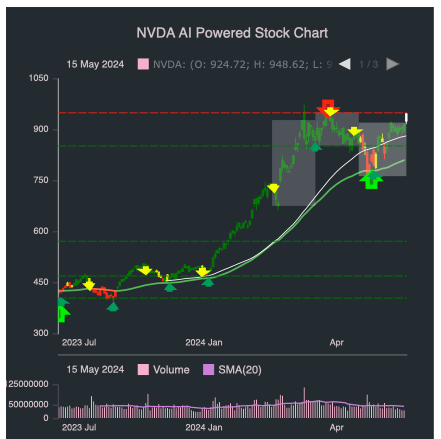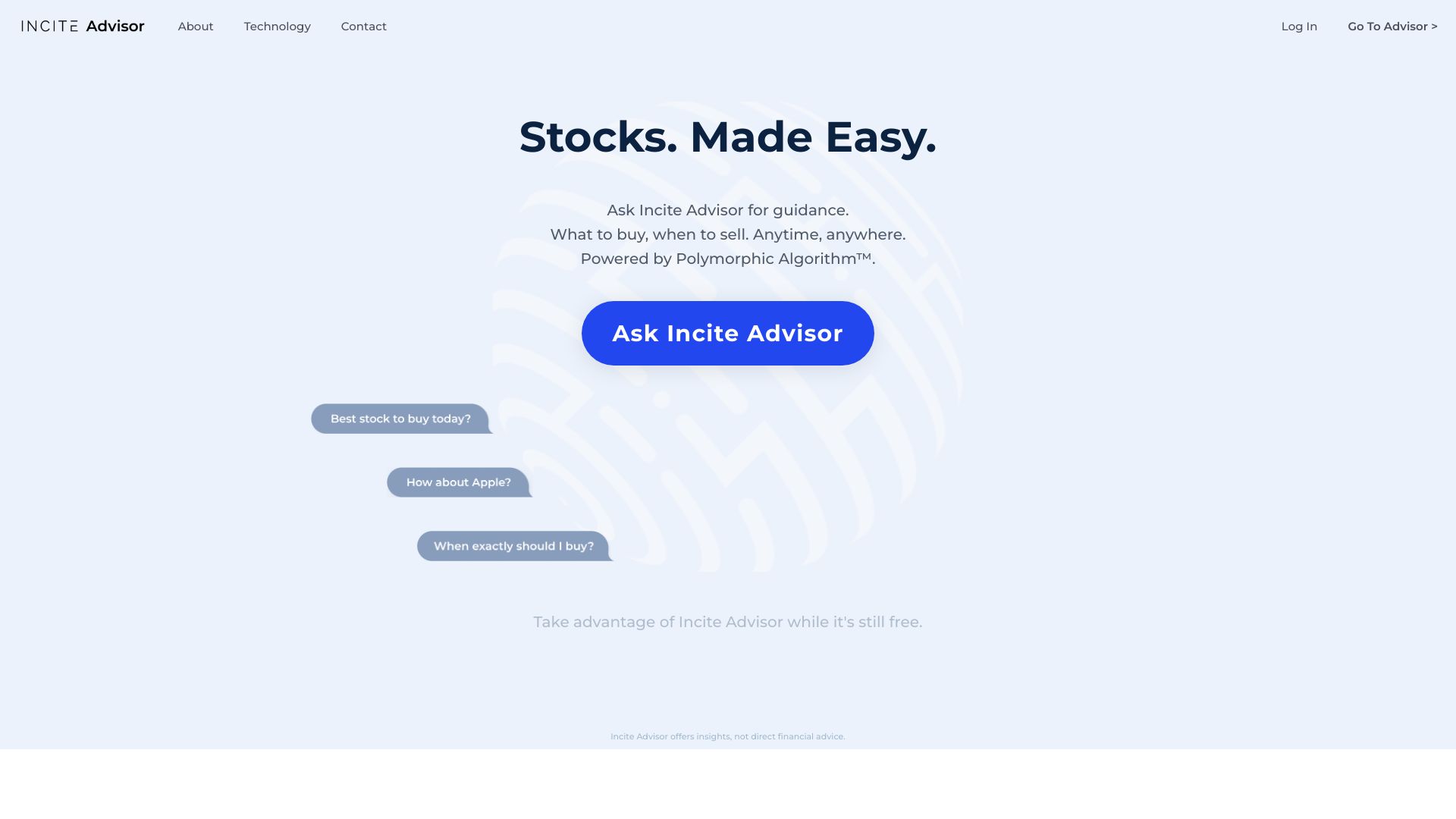20 Recommended Ideas For Choosing AI Stock Analysis Sites
Top 10 Tips To Evaluate Ai And Machine Learning Models Used By Ai Trading Platforms To Predict And Analyze StocksIt is important to assess the AI and Machine Learning (ML) models that are employed by stock and trading prediction platforms. This will ensure that they deliver accurate, reliable and actionable information. Poorly designed or overhyped models could lead to inaccurate predictions and even financial losses. We have compiled our top 10 recommendations for evaluating AI/ML-based platforms.
1. Learn the purpose and approach of this model
Clear goal: Determine whether the model was designed for short-term trading, long-term investing, sentiment analysis, or for risk management.
Algorithm transparency: See if the platform discloses types of algorithm used (e.g. Regression, Decision Trees, Neural Networks, Reinforcement Learning).
Customizability: Determine if the model can adapt to your particular strategy of trading or tolerance for risk.
2. Evaluation of Model Performance Metrics
Accuracy. Examine the model's ability to predict, but do not just rely on it because it could be misleading.
Precision and recall (or accuracy): Determine how well your model can discern between real positives - e.g. accurate predictions of price fluctuations as well as false positives.
Risk-adjusted gains: Examine whether the forecasts of the model can lead to profitable transactions after accounting for the risk.
3. Test the model using Backtesting
Performance historical Test the model by using historical data and see how it would perform in previous market conditions.
Testing out-of-sample: Ensure that your model has been tested on data it was not used to train on in order to avoid overfitting.
Analysis of scenarios: Evaluate the model's performance in various market conditions.
4. Check for Overfitting
Overfitting signs: Look out for models that do exceptionally well on training data but poorly on unseen data.
Methods for regularization: Make sure whether the platform is not overfit using regularization techniques such as L1/L2 and dropout.
Cross-validation (cross-validation) Verify that the platform is using cross-validation to evaluate the generalizability of the model.
5. Assess Feature Engineering
Relevant features: Make sure the model incorporates relevant features, like price, volume or technical indicators. Also, look at sentiment data and macroeconomic factors.
Selection of features: Make sure that the system chooses characteristics that have statistical significance, and avoid redundant or irrelevant information.
Dynamic features updates: Check whether the model adapts over time to new features or to changing market conditions.
6. Evaluate Model Explainability
Interpretability: Ensure the model is clear in explaining its predictions (e.g. SHAP values, feature importance).
Black-box Models: Watch out when you see platforms that use complicated models with no explanation tools (e.g. Deep Neural Networks).
User-friendly insights: Make sure that the platform provides actionable insights in a form that traders are able to comprehend and use.
7. Reviewing Model Adaptability
Market shifts: Determine whether your model is able to adjust to market fluctuations (e.g. new laws, economic shifts or black-swan events).
Check to see if your platform is updating the model regularly by adding new data. This will increase the performance.
Feedback loops - Make sure that the platform integrates real-world feedback from users and feedback from the user to improve the system.
8. Check for Bias in the elections
Data bias: Make sure the data used for training is representative of the marketplace and free of biases.
Model bias - See the platform you use actively monitors the presence of biases within the model's predictions.
Fairness. Make sure your model doesn't unfairly favor certain industries, stocks, or trading methods.
9. Examine the computational efficiency
Speed: See if the model generates predictions in real time, or at a low delay. This is especially important for high-frequency traders.
Scalability: Determine whether the platform can manage large datasets and multiple users with no performance loss.
Utilization of resources: Determine if the model has been optimized to utilize computational resources effectively (e.g., GPU/TPU utilization).
Review Transparency & Accountability
Model documentation: Make sure the platform has comprehensive documentation about the model's structure and the training process.
Third-party Audits: Check whether the model has independently been verified or audited by third organizations.
Make sure whether the system is equipped with a mechanism to identify model errors or failures.
Bonus Tips
User reviews and cases studies User feedback is a great way to gain a better understanding of how the model performs in real-world scenarios.
Trial period: Use the demo or trial version for free to test the model and its predictions.
Support for customers - Ensure that the platform is able to offer a solid support service to help you resolve the model or technical problems.
By following these tips You can easily evaluate the AI and ML models of stocks prediction platforms, making sure they are reliable and transparent. They should also be aligned with your trading objectives. Check out the most popular great site on ai for stock predictions for more advice including ai investing app, ai for stock trading, investment ai, ai investment app, options ai, ai for trading, ai investment app, ai investment app, best AI stock, stock ai and more.

Top 10 Strategies To Maintain And Update Ai Trading Platforms
It is essential to review the updates and maintenance practices of AI-driven trading and stock prediction platforms. This will help ensure that they're secure and are in sync with the changing market conditions. Here are the top ten suggestions for evaluating update and maintenance procedures:
1. Frequency of Updates
Find out the frequency with which updates are posted (e.g. every week, every month, or every quarter).
The reason: Regular updates are a sign of active development, and a responsiveness to changes in the market.
2. Transparency in Release Notes
Read the notes from the Release Notes of the platform to learn about the changes and improvements are being made.
Transparent release notes demonstrate the platform's commitment towards continuous improvements.
3. AI Model Retraining Schedule
You can ask the AI model how often it's retrained.
Why: Markets evolve, and models must adapt to ensure accuracy and relevance.
4. Fixes for bugs and issue resolution
Tips: Check how quickly the platform addresses bugs or technical issues identified by users.
Reason: Bug fixes are made in the shortest time possible in order to make sure that the platform is stable and reliable.
5. Updates on security
Tips: Make sure that the website is regularly changing its security procedures to secure the user's data and trading activity.
Security is a must for the financial industry to avoid theft and fraud.
6. Integration of New Features
Examine the platform to determine if it has added new features based on market or user feedback (e.g., enhanced analytics).
The reason: Feature updates show innovation and responsiveness to user demands.
7. Backward Compatibility
Tip: Ensure that updates do not disrupt existing functions or require major reconfiguration.
The reason: Backward compatibility provides users have a smooth experience when they transitions.
8. Communication between Maintenance and the User Personnel
You can assess the dissemination of maintenance schedules or downtimes to users.
The reason: Clear communication minimizes disruptions and builds confidence.
9. Performance Monitoring and Optimization
Tip: Make sure the platform monitors and optimizes performance metrics of the system (e.g. precision, latency).
The reason: Continuous optimization is essential to ensure that the platform is efficient.
10. Compliance with regulatory changes
Tips: Find out whether the platform has new features or policies that are in line with the financial regulations and privacy laws.
Why? Regulatory compliance is necessary to avoid legal liabilities and to maintain trust among consumers.
Bonus Tip: Integration of user feedback
Check that the platform is taking feedback from users into maintenance and updates. This shows a genuinely user-centric approach and a commitment to improving.
By evaluating the above aspects, you will be able to assess whether or not the AI trading and stock prediction platform that you pick is maintained, current and capable of adapting to the changing market conditions. Read the top rated related site on how to use ai for stock trading for site examples including best ai penny stocks, ai options, best stock prediction website, ai share trading, best stock prediction website, best stock prediction website, best ai trading platform, trading ai tool, ai options trading, AI stock predictions and more.
